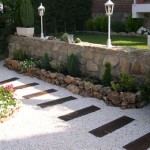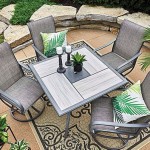Porcelain Outdoor Tiles For Patio: A Durable and Elegant Flooring Solution
Porcelain outdoor tiles have become an increasingly popular choice for patios, decks, and other outdoor living spaces. Their durability, aesthetic versatility, and relatively low maintenance requirements make them a compelling alternative to traditional materials like natural stone, concrete, and wood. This article delves into the key characteristics, benefits, considerations, and installation aspects of porcelain outdoor tiles for patio applications.
Understanding Porcelain Tile Composition and Manufacturing
Porcelain tiles are a subset of ceramic tiles, distinguished by their composition and manufacturing process. They are primarily composed of fine-grained clay, feldspar, and silica, carefully selected and blended for optimal performance. The manufacturing process involves high-pressure compaction of the raw materials, followed by firing at extremely high temperatures, typically ranging from 2200 to 2500 degrees Fahrenheit. This intense heat vitrifies the tile, resulting in a dense, hard, and non-porous material. The vitrification process is critical because it significantly reduces the water absorption rate, a key factor in the tile's durability, especially in outdoor environments.
The water absorption rate of porcelain tiles is typically less than 0.5%, as defined by the American Society for Testing and Materials (ASTM) standard C373. This low absorption rate is what classifies a tile as "porcelain." Lower water absorption translates to increased resistance to freezing and thawing cycles, which can cause cracking and degradation in materials with higher porosity. This characteristic is especially important in regions with significant temperature fluctuations and inclement weather.
The manufacturing process also allows for a wide range of aesthetic variations. Porcelain tiles can be produced in various colors, textures, sizes, and patterns, mimicking natural stone, wood, concrete, and other materials. Advanced printing technologies allow for high-resolution imagery to be applied to the tile surface, creating incredibly realistic and visually appealing designs. This versatility makes porcelain tiles a suitable option for various architectural styles and design preferences.
Key Benefits of Porcelain Outdoor Tiles for Patios
The selection of outdoor patio materials must consider several factors, including durability, aesthetics, safety, and maintenance. Porcelain outdoor tiles offer a distinct advantage in each of these aspects, contributing to their growing popularity among homeowners and landscape designers.
Durability and Weather Resistance: As previously mentioned, the low water absorption rate is a primary driver of porcelain tile's durability. This feature prevents moisture from penetrating the tile body, minimizing the risk of cracking, spalling, and other forms of damage caused by freeze-thaw cycles. Furthermore, porcelain tiles are highly resistant to fading, staining, and scratching, ensuring that the patio maintains its aesthetic appeal for years to come. The inherent strength of the material also makes it resistant to impacts and heavy loads, making it suitable for high-traffic areas and patios with outdoor furniture.
Aesthetic Versatility: Porcelain tiles are available in a vast array of styles, colors, and textures, offering unparalleled design flexibility. Whether the desired aesthetic is a rustic stone look, a modern concrete finish, or a classic wood plank appearance, there is likely a porcelain tile option to achieve the desired effect. The ability to mimic natural materials allows homeowners to create a visually appealing and cohesive outdoor space without the maintenance associated with the real thing. This is particularly true for wood-look porcelain tiles, which provide the warmth and beauty of wood without the risk of rot, insect infestation, or the need for regular staining or sealing.
Low Maintenance: Compared to natural stone, concrete, or wood, porcelain tiles require minimal maintenance. Their non-porous surface resists stains and spills, making them easy to clean with simple soap and water. Unlike natural stone, porcelain tiles do not require sealing to protect them from water damage or staining. The scratch-resistant surface also reduces the need for specialized cleaning products or abrasive scrubbing. Routine sweeping or rinsing is typically sufficient to keep the patio looking clean and well-maintained. This ease of maintenance makes porcelain tiles a practical choice for homeowners seeking a low-effort outdoor flooring solution.
Safety Considerations: When selecting outdoor flooring materials, slip resistance is a crucial safety concern. Porcelain tiles are available with various surface textures designed to enhance traction and reduce the risk of slips and falls, especially when wet. These textured finishes, often referred to as "grip finish" or "anti-slip," provide a safer walking surface around pools, spas, and other areas prone to moisture. The slip resistance of a tile is typically measured using a coefficient of friction (COF) rating. A higher COF indicates greater slip resistance. It is important to select tiles with a suitable COF rating for the specific application and local building codes.
Key Considerations for Selecting Porcelain Outdoor Tiles
While porcelain tiles offer numerous benefits, careful consideration should be given to several factors when selecting tiles for an outdoor patio. These factors include climate, intended use, budget, and installation requirements. Improper selection can lead to premature failure or dissatisfaction with the final result.
Climate and Weather Conditions: The prevailing climate and weather conditions in the area are critical factors to consider. In regions with harsh winters and frequent freeze-thaw cycles, it is essential to select porcelain tiles with a low water absorption rate and a high frost resistance rating. Tiles that are not designed for these conditions may crack or deteriorate over time. In hot climates, the color of the tile should be considered. Darker tiles tend to absorb more heat than lighter tiles, which can make the patio surface uncomfortably hot to walk on. Light-colored or reflective tiles can help to mitigate this issue.
Intended Use and Traffic: The intended use of the patio and the anticipated traffic volume should also influence tile selection. For high-traffic areas or patios that will be used for heavy furniture or equipment, tiles with a high abrasion resistance rating are recommended. The Porcelain Enamel Institute (PEI) rating is a commonly used measure of abrasion resistance. A higher PEI rating indicates greater resistance to scratches and wear. For patios that will be used for dining or entertaining, stain resistance is also an important consideration. Tiles with a non-porous surface will be less susceptible to staining from food, drinks, and other spills.
Budget and Cost Considerations: The cost of porcelain tiles can vary significantly depending on the style, size, and quality of the tile. While porcelain tiles are generally more expensive than concrete pavers, they offer a longer lifespan and require less maintenance, which can offset the initial cost over time. Installation costs should also be factored into the overall budget. Professional installation is typically recommended to ensure proper drainage and prevent premature failure. The cost of installation will vary depending on the complexity of the project and the local labor rates.
Installation Requirements and Substrate Preparation: Proper installation is crucial for the long-term performance of porcelain outdoor tiles. The substrate, or base, beneath the tiles must be properly prepared to ensure a stable and level surface. A well-draining base is essential to prevent water from accumulating beneath the tiles, which can lead to cracking or heaving during freeze-thaw cycles. A common substrate is a compacted layer of gravel followed by a layer of mortar. The tiles should be installed with a suitable adhesive mortar designed for outdoor use. The mortar should be applied evenly and consistently to ensure proper bond strength. Expansion joints should be incorporated into the design to accommodate thermal expansion and contraction. Grout should be applied to fill the spaces between the tiles and sealed to prevent water penetration.
In conclusion, porcelain outdoor tiles represent a sophisticated and functional solution for patios. By understanding the composition, benefits, and key considerations, homeowners can make informed decisions to create an outdoor space that is both beautiful and durable. The combination of aesthetic versatility, low maintenance, and long-term performance makes porcelain tiles a compelling investment for enhancing outdoor living areas.

Outdoor Porcelain Tiles 8 Stunning Designs Stiled Com

The Complete Guide To Choosing Best Outdoor Tile

Laying Porcelain Tiles Outside Tools And Best Practices
Is Porcelain Tile A Good Choice For Patio

Porcelpave Quartzite Grey Outdoor Porcelain Patio Tiles Contemporary Courtyard Hampshire By The London Tile Co Houzz

Baslow Outdoor Al Fresco Verona Floor Tile

Valencia Sand 20mm Stone Effect Outdoor Porcelain Tile 59x90cm

Creating Gorgeous Patios With Outdoor Porcelain Tile

How To Clean Outdoor Porcelain Tiles House Of Mosaics

Can You Use Porcelain Tiles Outdoors I Outside








